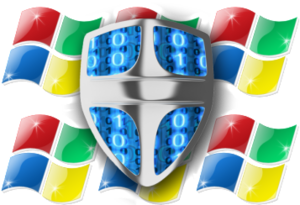Microsoft's integration of Windows Defender into Windows 8 seems to have little effect on the desire of users to install standalone security software, new figures from security management firm OPSWAT have shown.
After crunching data gathered from 4000 systems running its Security Score and GEARS Cloud monitoring software, OPSWAT found that 65 percent of the Windows 8 element of this sample (21 percent) were running a second antivirus product offering real-time protection in addition to Defender.
By comparison, the figures for XP were 9 percent, and Vista and Windows 7 around 20 percent, which is to say that OPSWAT at least detected some element of a second product on these systems even if it was not running.
Direct comparisons between these operating systems are not possible because Windows 8 uses a different architecture than previous versions, allowing users to supplement Defender's protection with a dedicated product, a simultaneity in real-time protection that was difficult or impossible in older versions. The new Windows Defender is also a completely revised product to the old Windows Defender, released in 2006 before itself being re-launched as Microsoft Security Essentials.
What it does suggest is that the arrival of integrated antivirus protection hasn't harmed the market for third-party products as much as some feared.
Still room for third-party products
The firm doesn't speculate on the tendency of Windows 8 users to use a dedicated security client but it is possible that many don't realize that Windows Defender offers this feature or if they do, simply don't trust it. The habit of installing a visible security client could simply be hard to break.

The figures back up an earlier cut on the data offered by OPSWAT in August that noticed the trend to supplement Windows 8's security. On the basis that two security products are better than one, the news is encouraging.
The most popular antivirus products encountered were (in order), Avast's Free Antivirus (19.6 percent), Microsoft's own Security Essentials (17.2 percent), Windows Defender (7.8 percent), Avira's Free Antivirus (5.8 percent), and AVG's Anti-Virus Free Edition (4.8 percent), although given the limited installed base of the software used to generate the numbers OPSWAT no longer claims this to be definitive market share data. It does, however, chime with its own previous estimates.
A scrap of new data is on the prevalence of encryption on PCs, with desktop systems having at least one encrypted drive 0.4 percent of the time. The fact that laptops used encryption 3.7 percent of the time on one drive is not surprising given their mobile state but still underlines how far this technology has to go before it becomes mainstream.
Subscribe to the Security Watch Newsletter
Thank you for sharing this page.
Sorry! There was an error emailing this page
Tags: Reign breast cancer awareness derek hough 9 news apple stock
No comments:
Post a Comment
Note: Only a member of this blog may post a comment.